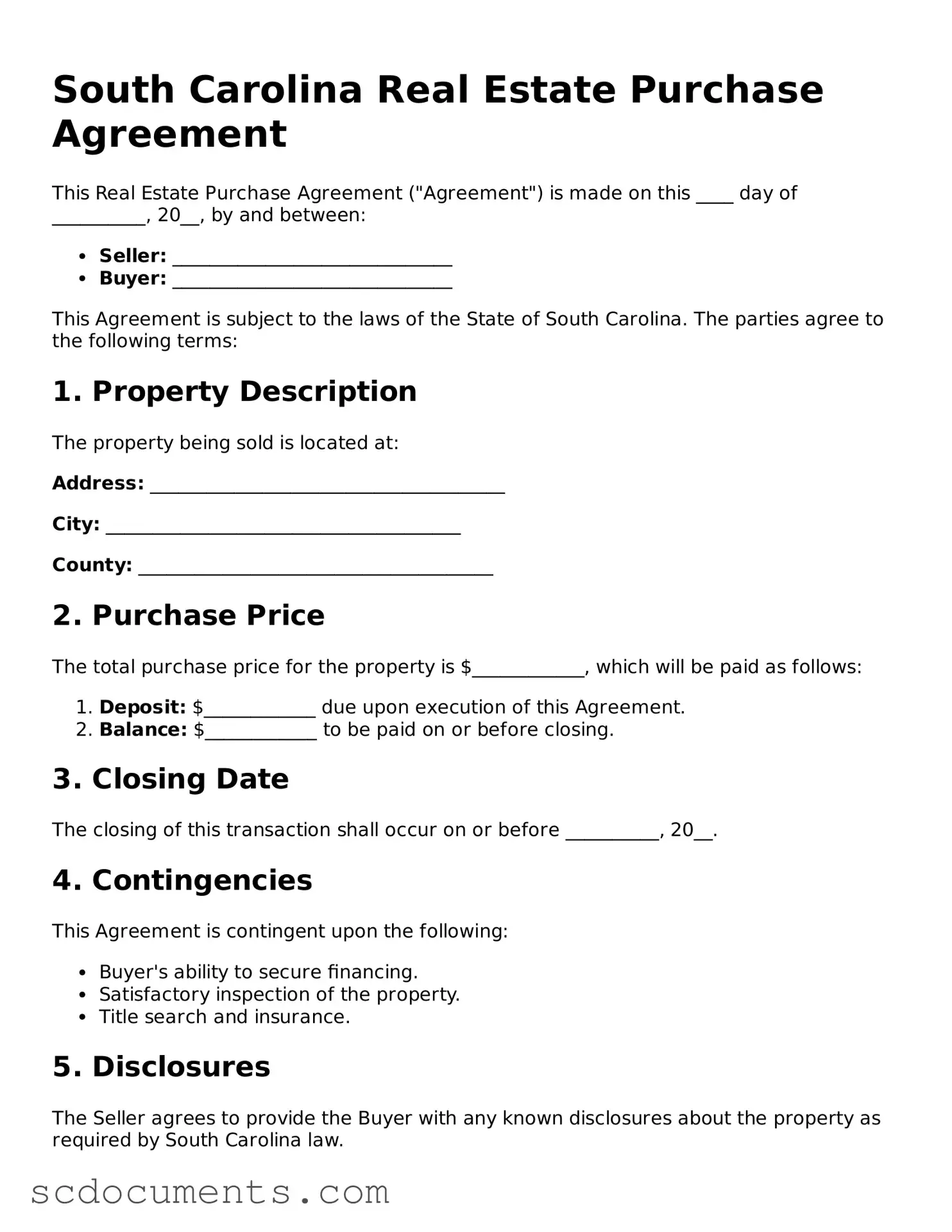Legal South Carolina Real Estate Purchase Agreement Form
The South Carolina Real Estate Purchase Agreement is a legal document used to outline the terms and conditions of a property sale in South Carolina. This agreement serves as a binding contract between the buyer and seller, detailing essential information such as purchase price, financing, and contingencies. Understanding this form is crucial for anyone involved in real estate transactions in the state.
Access My Real Estate Purchase Agreement
